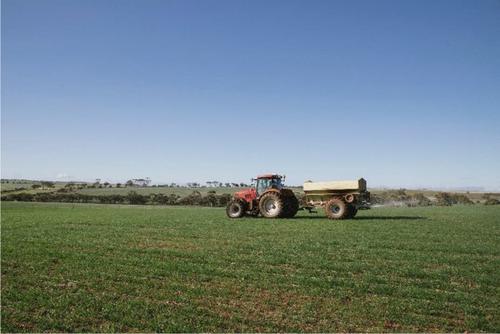Agronomy for Sustainable Development ( IF 6.4 ) Pub Date : 2023-01-24 , DOI: 10.1007/s13593-023-00867-y Elizabeth H. Petersen , Craig A. Scanlan , Michael P. Burton , Yvette M. Oliver , Daniel V. Murphy , Frances C. Hoyle

|
Factors affecting fertilizer decisions made by grain growers are changing in the context of changing climatic conditions and growing volatility in global fertilizer and grain markets. To ensure sustainable development of grain industries in light of this uncertainty, research, development, extension, and adoption activities associated with growers’ fertilizer decisions need to be focused on factors to which they are most sensitive. The aim of this paper is to understand the factors that have the greatest influence on grain producer’s fertilizer strategies, how these factors have changed over recent years, and what is the relative importance of agronomic, socioeconomic, and logistical factors affecting these strategies. A telephone survey of 425 grain-growing businesses in Western Australia was conducted, and survey results were analyzed statistically. We show for the first time that grain growers’ fertilizer decisions are most sensitive to agronomic factors (especially the amount and distribution of rainfall). Logistic factors (such as difficulties fertilizing increasing areas in short periods of time) are growing in influence as farm size, cropping areas, and the number of fertilizer applications within seasons increase. Fertilizer decisions have become less sensitive to socioeconomic factors over the last 10 to 15 years. To ensure sustainable development of grain production, research through to adoption activities should focus on agronomic issues (such as seasonal forecasting) and logistic issues (such as improving planning, organizational, and technical capacity for developing and implementing fertilizer strategies).
中文翻译:

农艺因素是旱地种植系统氮肥施肥策略的主要影响因素
在气候条件不断变化以及全球肥料和粮食市场波动加剧的背景下,影响粮食种植者施肥决策的因素正在发生变化。鉴于这种不确定性,为了确保粮食产业的可持续发展,与种植者的肥料决策相关的研究、开发、推广和采用活动需要关注他们最敏感的因素。本文的目的是了解对粮食生产者施肥策略影响最大的因素、这些因素近年来的变化情况,以及影响这些策略的农艺、社会经济和物流因素的相对重要性。对西澳大利亚 425 家谷物种植企业进行了电话调查,并对调查结果进行统计分析。我们首次表明,粮食种植者的施肥决定对农艺因素(尤其是降雨量和分布)最为敏感。随着农场规模、种植面积和季节内施肥次数的增加,后勤因素(例如难以在短时间内增加面积施肥)的影响越来越大。在过去的 10 到 15 年里,施肥决策对社会经济因素的敏感性降低了。为确保粮食生产的可持续发展,从研究到采用活动应侧重于农艺问题(如季节预报)和物流问题(如提高制定和实施肥料战略的规划、组织和技术能力)。我们首次表明,粮食种植者的施肥决定对农艺因素(尤其是降雨量和分布)最为敏感。随着农场规模、种植面积和季节内施肥次数的增加,后勤因素(例如难以在短时间内增加面积施肥)的影响越来越大。在过去的 10 到 15 年里,施肥决策对社会经济因素的敏感性降低了。为确保粮食生产的可持续发展,从研究到采用活动应侧重于农艺问题(如季节预报)和物流问题(如提高制定和实施肥料战略的规划、组织和技术能力)。我们首次表明,粮食种植者的施肥决定对农艺因素(尤其是降雨量和分布)最为敏感。随着农场规模、种植面积和季节内施肥次数的增加,后勤因素(例如难以在短时间内增加面积施肥)的影响越来越大。在过去的 10 到 15 年里,施肥决策对社会经济因素的敏感性降低了。为确保粮食生产的可持续发展,从研究到采用活动应侧重于农艺问题(如季节预报)和物流问题(如提高制定和实施肥料战略的规划、组织和技术能力)。











































 京公网安备 11010802027423号
京公网安备 11010802027423号